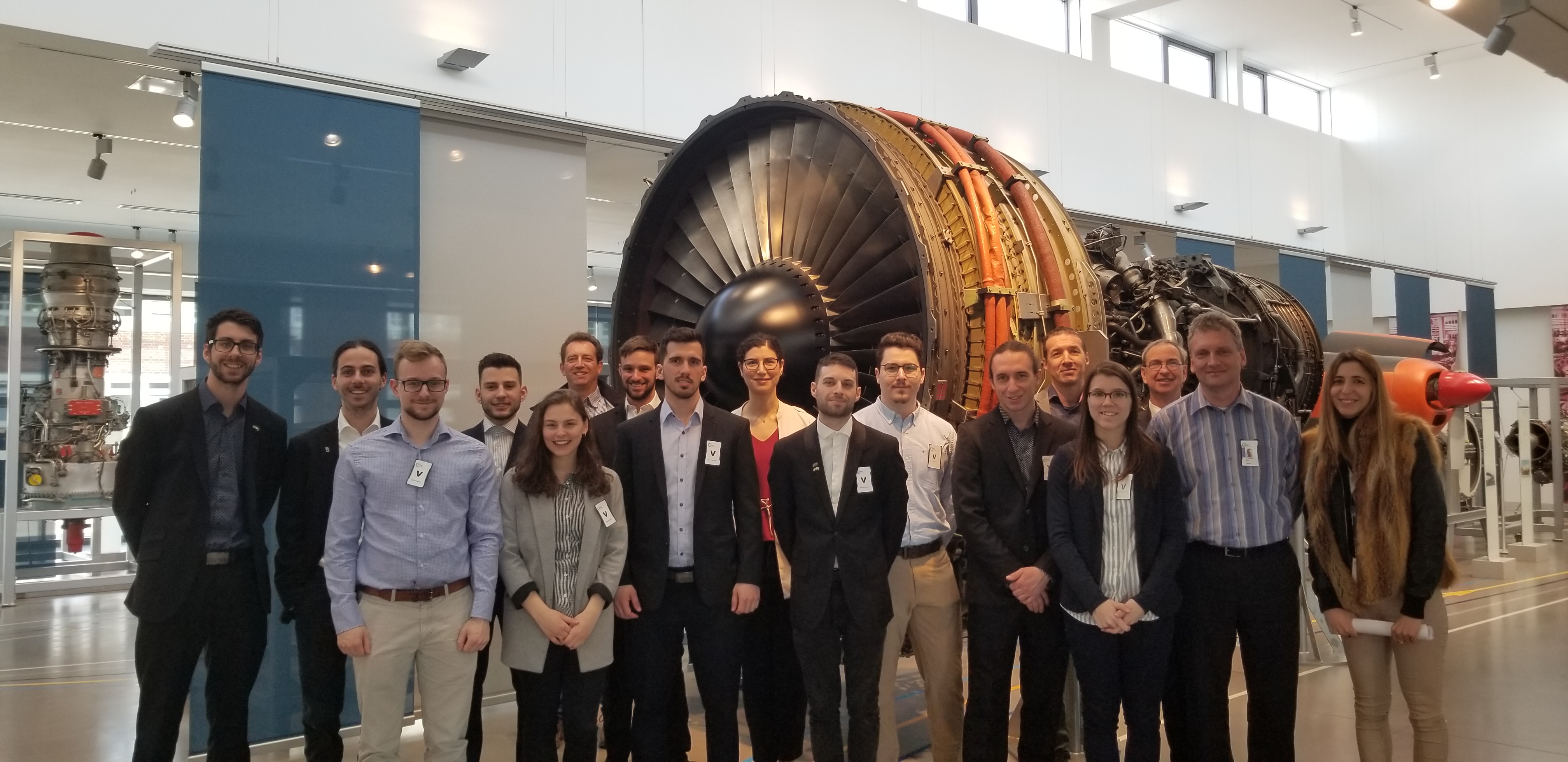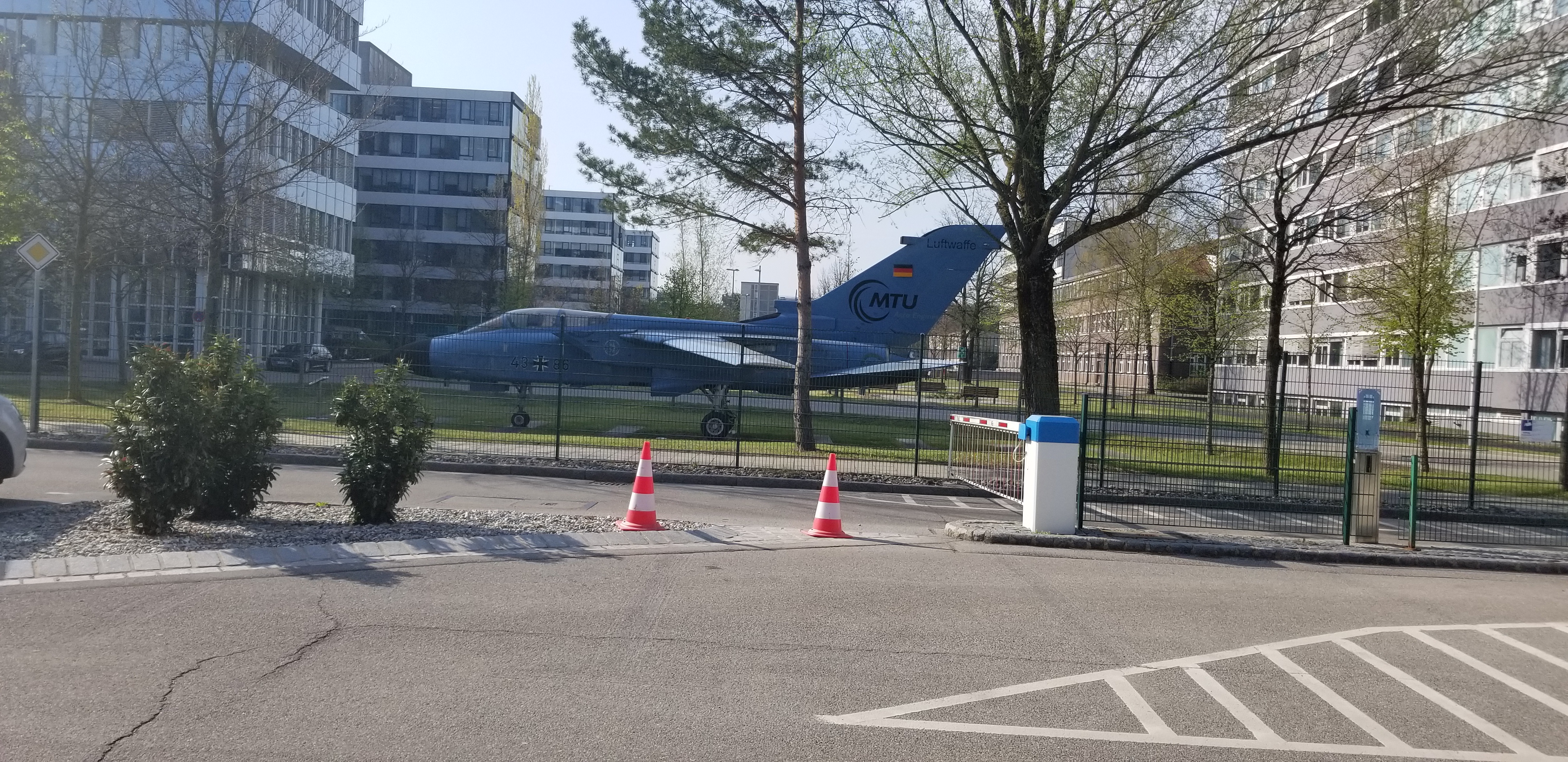*Since cameras were banned on the site, we unfortunately cannot show you images of the car assembly line.
To start our day, we left the city center for MTU Aero Engines, a company based 30 minutes north from Munich. The plan was to have a presentation of one of their engineer and former intern, speaking with them about ÉTS and the importance of internships, and visiting the assembly line of the PW 1000 engine.
Reaching MTU from the center proved itself very easy, thanks to the effectiveness and great coverage of public transportations in the Greater Munich Area. Doctor Schaber, member of the Advanced Technologies department and his boss greeted us to a conference room. A recent hire of them, Christina gave a talk about her experience at the company, first as a foreigner intern and then as a full-time employee, as well as about the vision that her team had for the aerospace industry in 2050. The teams’ goals were mainly involving a drastic decrease in the airplanes environmental impact since the traffic is likely to increase by 100% at that time. Some figures they presented included a decrease of 70% of CO2 emissions and 45% of NOx.

Two members of our team–ÉTS undergrad students, presented their internship experience to an HR representative and the three people from Advanced Technologies. It’s important to note that ÉTS and MTU have had a close relationship as far as internships are concerned since multiple students were there already. Audrey Deschênes of the International Student Office and Prof. Simon Joncas gave details about the applied character of the research and science being undertaken at ÉTS, and the many links with different industries.
We were then offered a tour of the huge campus, with the most important part for us being the presentation by another MTU engineer of an assembly line. He went through the whole process of building the PW1100 engine, a common engine type that can be found on Airbus A320neo aircrafts for instance, that are sold worldwide to airline companies. Something surprising was the non-automated way the work was taking place: mechanics workers were building the large engines one-by-one, assembling parts by hand. This allowed for easy inspection after each step, which was very important for quality control, and as usual with assemblies, it’s very hard to get robots working without trouble.
Some interesting facts:
-MTU built 4 engines in 2016 and more than 300 each years nowadays.
-For the PW1100 engines, 5000 pieces are assemble by MTU for a total of 40 000 pieces.
-The assembly of the engines takes 8 differents steps and a test phase all done in a day of work.
